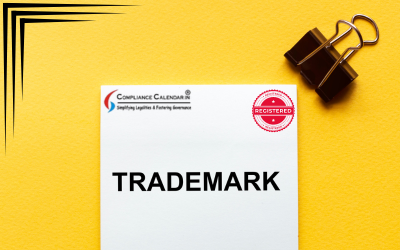Trademark Registration in the Case of Honest Concurrent Use

Strong 8k brings an ultra-HD IPTV experience to your living room and your pocket.
Trademark registration is a serious aspect of protecting a brand’s identity and safeguarding legal rights over its usage. However, difficulties arise when two or more parties claim rights over identical or similar trademarks. One such scenario is "honest concurrent use," where multiple entities have been using the same or similar trademarks independently and in good faith. Today we talk about to concept of honest concurrent use in trademark registration, its legal implications, procedures, and examples, particularly within the Indian context.
Understanding Honest Concurrent Use
Honest concurrent use refers to situations where two or more parties have been using an identical or similar trademark independently without any intention to deceive or cause confusion among consumers. This principle acknowledges that in a vast marketplace, especially in diverse economies like India, it is possible for businesses to adopt similar trademarks unknowingly. The concept is rooted in fairness, recognizing the legitimate interests of all parties involved.
Legal Framework in India
The Indian Trademark Act, 1999, under Section 12, addresses the issue of honest concurrent use. It provides that the Registrar may permit the registration of identical or similar trademarks by more than one proprietor if it is satisfied that:
1. The use by each party has been honest and concurrent.
2. There is no likelihood of confusion or deception among the public.
3. The interests of the public and the existing trademark owners are safeguarded.
The Registrar has the discretion to impose conditions and limitations, such as specifying the geographical area of operation or the nature of goods/services covered under the trademark.
Criteria for Establishing Honest Concurrent Use
To succeed in registering a trademark under honest concurrent use, the applicant must demonstrate several factors:
1. Duration and Extent of Use: The length of time each party has used the trademark and the extent of such use in the marketplace.
2. Good Faith Adoption: Proof that the adoption and use of the trademark were in good faith, without knowledge of the other party’s prior use.
3. Geographical Area: The specific regions where each party has operated under the trade mark registration.
4. Public Interest: Makes sure that concurrent use does not lead to consumer confusion or deception.
5. Honest Conduct: Evidence that there was no intention to ride on the goodwill of the other party.
Procedure for Trademark Registration under Honest Concurrent Use
1. Application Filing: The applicant must file a trademark application with the Indian Trademark Registry, specifying that the claim is based on honest concurrent use.
2. Supporting Evidence: Submission of complete evidence supporting the claim, including:
o Proof of continuous use (invoices, advertisements, packaging).
o Affidavits detailing the history and nature of use.
o Market surveys indicating public recognition.
3. Examination by Registrar: The Registrar examines the application and the evidence provided. If satisfied, the Registrar may accept the application with or without conditions.
4. Publication in Trademark Journal: The accepted application is published in the Trademark Journal, allowing third parties to oppose if they believe the registration would cause confusion or harm.
5. Opposition Proceedings: If opposed, the matter is adjudicated through opposition proceedings where both parties present their case.
6. Final Decision: Based on the evidence and arguments, the Registrar makes a final decision. If approved, the trademark is registered with specified limitations, if any.
Case Study: The Case of "POM Wonderful" vs. "Pom Juice"
An illustrative example of honest concurrent use can be drawn from international cases, such as the dispute between "POM Wonderful," a U.S.-based company, and "Pom Juice," an unrelated entity. Both businesses operated in the beverage industry, using similar trademarks for pomegranate-based products. Despite the similarity, both parties had adopted the trademark independently and built significant market presence.
The court considered factors like the duration of use, geographical markets, and branding strategies. Ultimately, it was determined that both parties had adopted the trademark honestly and concurrently. The court allowed both to continue using their trademarks, with specific conditions to minimize consumer confusion, such as distinct packaging and branding elements.
Indian Example: The "Rupa" vs. "Rupa & Co." Case
In India, a notable example is the case between "Rupa," a prominent hosiery brand, and "Rupa & Co.," a separate entity in the publishing industry. Both parties used the name "Rupa" but operated in entirely different sectors. Despite the identical trademark, their use was deemed honest and concurrent due to the distinct nature of their businesses and the lack of consumer confusion.
The Trademark Registry allowed both parties to register their trademarks, imposing limitations to ensure clear differentiation in branding and market communication.
Challenges in Honest Concurrent Use
While the concept of honest concurrent use offers a fair resolution, it also presents several challenges:
1. Risk of Consumer Confusion: Despite best efforts, there remains a risk of confusion, especially if the trademarks are used in overlapping markets.
2. Burden of Proof: The applicant must provide substantial evidence to prove honest concurrent use, which can be time-consuming and resource-intensive.
3. Legal Disputes: Even after registration, disputes may arise if one party feels the other is encroaching on their market or diluting their brand.
4. Registrar’s Discretion: The outcome heavily depends on the Registrar’s discretion, leading to potential inconsistencies in decisions.
Best Practices for Directing Honest Concurrent Use
To increase the possibility of successful registration under honest concurrent use, businesses should consider the following best practices:
1. Conduct Thorough Trademark Searches: Before adopting a trademark, conduct complete search report to identify potential conflicts.
2. Document Continuous Use: Maintain detailed records of the trademark’s use, including advertisements, sales, and market presence.
3. Engage Legal Expertise: Consult with trademark attorneys to direct the difficulties of honest concurrent use and prepare robust evidence.
4. Differentiate Branding: Make sure distinct branding elements to minimize the risk of consumer confusion.
5. Monitor Market Activity: Regularly monitor the marketplace for potential conflicts and take proactive measures to protect the trademark.
Final Remarks
Honest concurrent use in trademark registration represents a balance between protecting individual business rights and preventing consumer confusion. The Indian Trademark Act provides a legal framework to address such scenarios, makes sure fairness and equity. By understanding the principles, legal requirements, and best practices, businesses can direct the difficulties of honest concurrent use and secure their brand identity effectively.
Through real-world examples and legal insights, it is evident that honest concurrent use is a vital consideration in the dynamic scene of trademark law. As businesses continue to expand and innovate, the principles of honest concurrent use will play a key role in fostering a fair and competitive marketplace.
Note: IndiBlogHub features both user-submitted and editorial content. We do not verify third-party contributions. Read our Disclaimer and Privacy Policyfor details.






